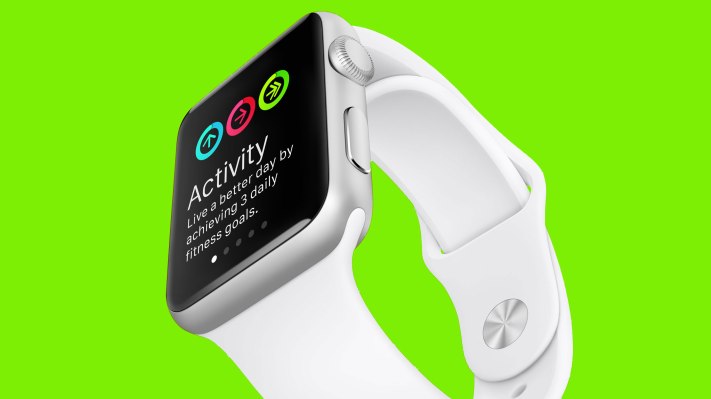What if you went to start your car and Apple Watch stopped you?
Yes, Apple Watch, with your permission, knew you had spent time at a bar, monitored your heartbeat and other physiological data and saw changes indicating that you had been overdrinking.
When you walked to your car, it connected to the CarKit-powered entertainment system, understood your situation and disabled the car’s Start button. You used your Apple Watch to call an Uber instead.
Or, you’re leaving work instead of a bar. Your device connects to your car’s stereo system and, based on your elevated stress level, starts playing your favorite relaxing jams.
It’s almost possible.
For the first time, we will be able to combine previously unattainable data to change how we’re seamlessly interacting with the world (and measuring ourselves in the process).
The Apple Watch is where your digital, physical and physiological worlds begin to intersect.
How does this happen?
Location, location, location
It starts with location. Location data has been and still is at the core of the modern mobile phone. But combining GPS, and more recently iBeacon interactions, with passively collected data has always been the holy grail of mobile.
Until recently, the average consumer had numerous sensors on their devices: GPS, accelerometer, sound measurement and so on. But for most of us, our smartphone was hidden away in our pocket or handbag. It wasn’t available at a tilt of the wrist.
These sensors, combined with user input, have made geodata useful and actionable. The likes of Yelp, Foursquare, Google Maps and Fitbit wouldn’t exist without it. Now, a slew of other companies are working on in-store solutions that merge hyper-local data with commerce, among other things.
How? That answer is part of the most desired Apple Watch app feature. Based on our surveys last month, we saw that users want to walk down a grocery store aisle and have their shopping list sort dynamically. Simple interactions like that are just the tip of the iceberg.
A sensitive kind of watch
But the Apple Watch takes sensors a step further.
Sensors can now measure an individual’s physiological data, augmenting and complementing their other data.
The Apple Watch can monitor:
- heartbeat levels and variability
- trembling and shaking and overall agitation levels
- potentially in the future, blood pressure and oxygen levels
Unlike the iPhone, the always-on aspect of the Apple Watch means these things can be constantly monitored and 100 percent correctly identified to the right owner.
Whereas your iPhone might be hijacked by your kid for gaming purposes, or buried deep in your pocket, the Apple Watch is always at hand and uniquely identified to you, the wearer.
Apple’s introduction of these new human sensors allows companies and their consumers to explore an entirely new area of data.
Suddenly, we’ll be able to assess how stressed you are in a group meeting or how nervous you are before a first date.
The bridge to digital health 2.0
People are already using and experiencing the benefits of Apple Watch as an augmented, connected health-monitoring tool.
The Apple Watch’s heart monitor saved a high school football player’s life when it detected early signs of a life-threatening kidney problem.
EpiWatch, the first ResearchKit app for the Apple Watch, is designed for users with epilepsy to track seizures and ultimately better understand their condition. The app collects and monitors data from both Apple Watch sensors and manual input before, during and after epileptic seizures.
Networks of devices
The Apple Watch (and iPhone) also can interact with other IoT devices and the cloud.
The more we engage with and use the Apple Watch in trackable ways that can be analytically visualized, the richer our potential insights will be on what is “really going on.”
We know that some emotions and states of mind leave physiological traces that the Apple Watch can measure — increased pulse, slowed or increased response times, unsteadiness.
By combining this physiological data with other data from the user’s environment, the “intelligence” of the data is increased. Other wearables or connected objects — like noise and sound monitors, thermometers, pollution sensors, sun exposure detectors, etc. — would contribute to an analysis of the person’s current mental or physical state. The device could then alert the user about any abnormal behavior or state of mind.
In the near future, new Apple Watch apps will offer gentle reminders to users to slow down and maybe take a break — all based on a truly holistic understanding of one’s state of well-being.
A bright future
These kinds of possibilities can benefit our well-being so simply. It opens up an entirely new dimension of innovation.
In that sense, Apple Watch is truly the first intimate and personal device. It’s set to change how we experience everyday life.
